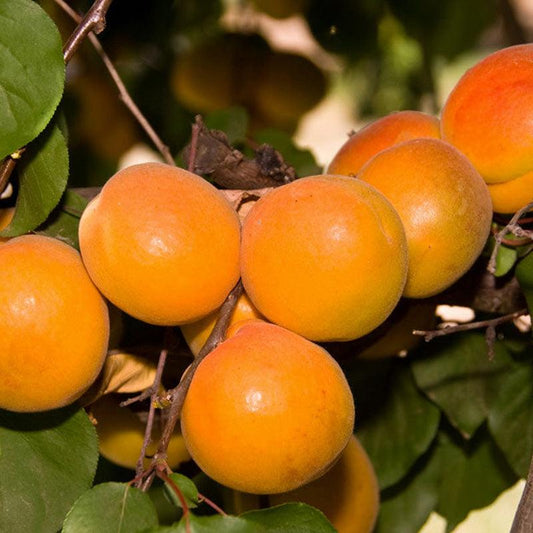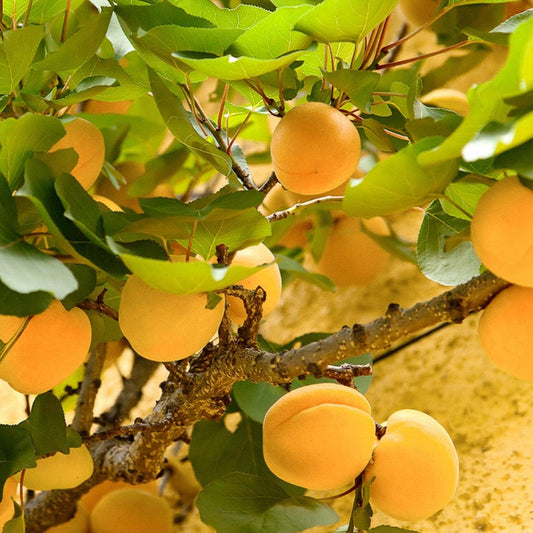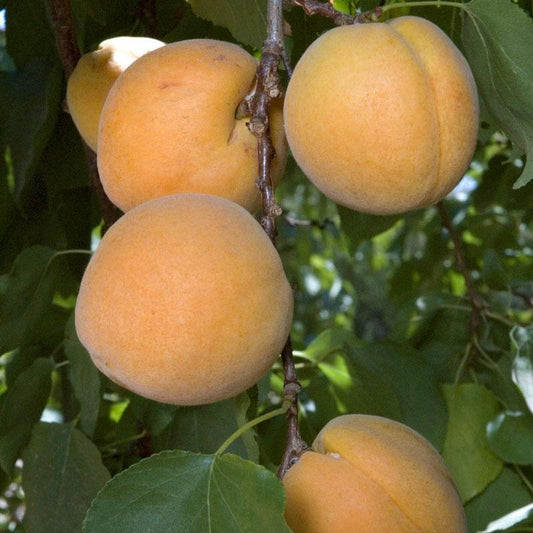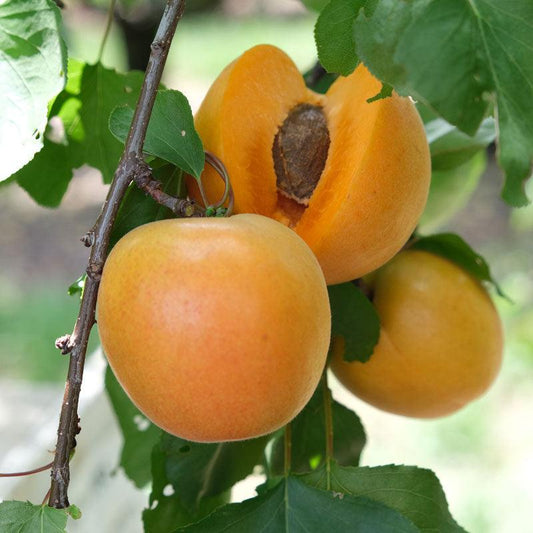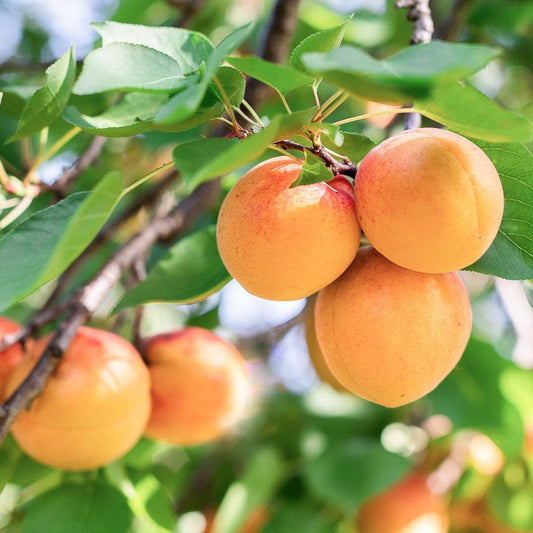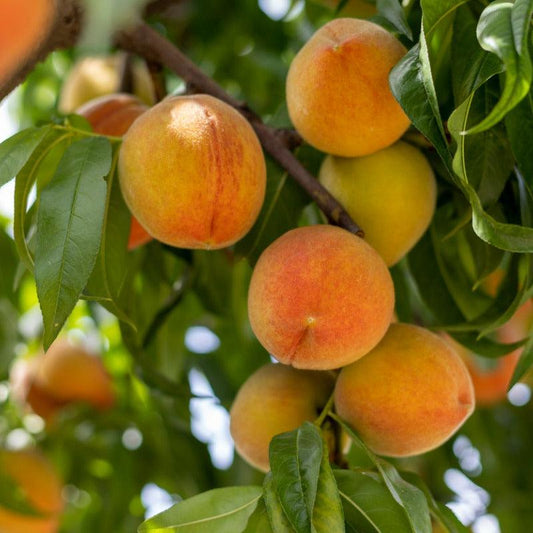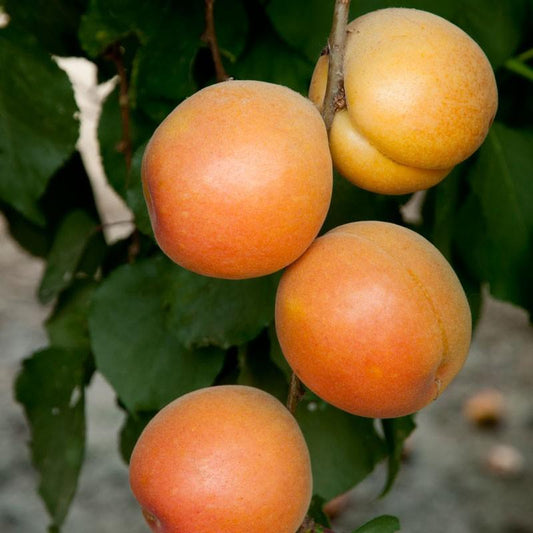A Guide to Selecting and Growing Apricot Trees
Apricot trees, Prunus armeniaca, are among the first stone fruits to ripen each season. Their fragrant blossoms, golden-orange fruit, and sweet flavor make them a popular choice in home gardens. Whether you’re just starting or expanding your orchard, our selection of apricot trees for sale makes it easy to select and grow your own delicious apricot harvest.
Explore our high-quality apricot fruit trees for sale, including heirloom and disease-resistant apricot tree varieties. Our apricot tree selection offers tress suited to various climates and hardiness zones. Use our zone lookup tool to find the right variety for your region.
Choosing Apricot Tree Varieties
Selecting the right apricot tree variety for your growing zone is essential for successful fruit production. Popular options include:
-
Moorpark Apricot Tree – A classic variety with rich, sweet flavor and firm, golden-orange flesh.
-
Katy – Early ripening and ideal for fresh eating.
-
Blenheim – Known for its juicy texture and balanced taste.
Learn more about choosing and planting varieties in our planting and propagation guide.
When and How to Plant Apricot Trees
Planting apricots as bare root trees in winter or early spring allows for strong root development before the growing season. Choose a site with full sun, meaning six or more hours per day.
Planting tips:
- Plant in early spring when the ground is workable.
- Ensure well-draining soil with a pH between 6.0 and 7.5.
- Dig a hole wide and deep enough to accommodate the roots.
- Keep the top of the root ball level with the soil surface.
- Backfill and water thoroughly to remove air pockets.
Detailed steps are in our planting guide.
Caring for Apricot Trees
Watering & Fertilization
Proper care supports healthy fruit trees. Water deeply and consistently, especially during dry spells. Apply a balanced fertilizer in early spring, before new growth begins.
Learn more in our watering and fertilization guide.
Pruning & Maintenance
Prune in winter or early spring to shape the tree, remove dead branches, and improve air circulation. This reduces the risk of fungal disease and improves fruit production.
Follow best practices in our pruning and training guide.
Pest & Disease Management
Apricot trees produce best when protected from pests like aphids and peach borers, and from diseases such as brown rot and powdery mildew. Use integrated pest control methods and maintain good airflow.
See our full pest and disease management guide.
Fruit Production and Seasonal Considerations
Apricot trees produce blossoms in early spring, with fruit developing by late spring and ripening in early to mid-summer. For higher yields:
- Thin fruit at walnut size to prevent overcrowding.
- Use netting to deter birds.
- Protect blossoms from spring frosts using frost cloth or irrigation.
Understand your tree's growth cycle in our growing conditions guide.
Climate Adaptation and Soil Tips
Prunus armeniaca, the common apricot, grows well in hardiness zones with temperate or Mediterranean climates. Avoid frost-prone areas, and consider raised beds or mounds for better draining soil.
To match varieties with your climate, check our zone lookup tool.
Shop Apricot Trees and More
At Grow Organic, we offer premium trees for sale, including a wide range of apricot tree varieties. All trees are shipped bare root and dormant.
Whether you’re planting apricots for fresh eating or seasonal baking, our fruit trees are selected for performance and flavor. Browse our full fruit tree collection and guides to get started.
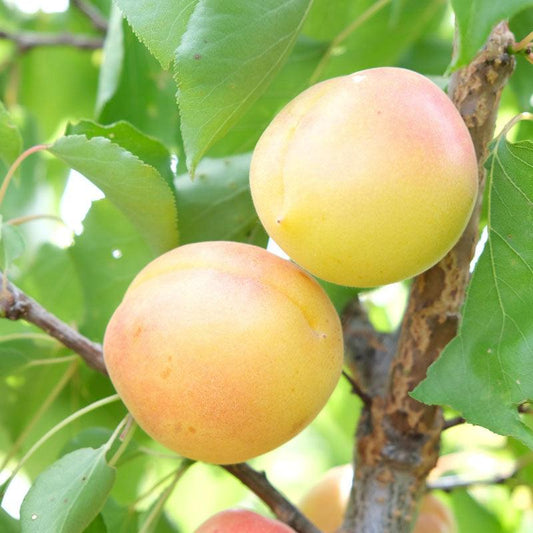 Sold out
Sold out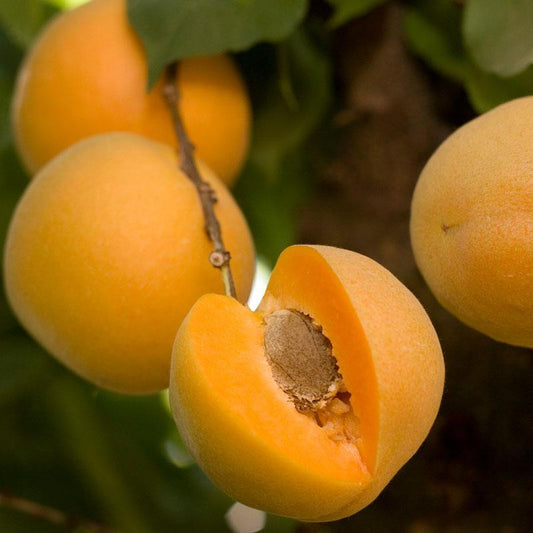 Sold out
Sold out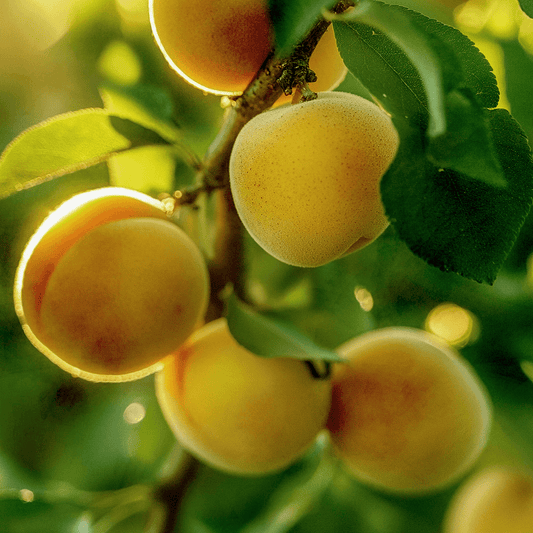 Sold out
Sold out

